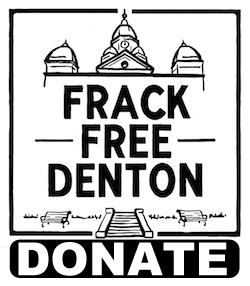Last year I blogged about a new study: the Journal of the American Medical Association confirms that exposure to “air pollutants–in some cases for a single day–increases the chance” of heart attack.
A newly released study focused on industrial pollutants found that congenital heart defects are strongly associated with mixtures of toxic air pollutants. The list of toxins are the same toxins people are being exposed to in shale oil and gas areas.
Environmental toxins linked to heart defects
DALLAS, Nov. 17, 2013 — Children’s congenital heart defects may be associated with their mothers’ exposure to specific mixtures of environmental toxins during pregnancy, according to research presented at the American Heart Association’s Scientific Sessions 2013.
What they found is mixtures of pollutants made up of organic compounds and metals had a strong correlation to congenital heart defects. In 2006 a chemicals management plan was put in place to bring down the air pollutants and the congenital heart defect rates decreased as the air pollutants decreased. Women who are pregnant should avoid living in heavily polluted areas.
“Although still in the early stage, this research suggests some chemical emissions — particularly, industrial air emissions — may be linked to heart abnormalities that develop while the heart is forming in the womb,” said lead researcher Deliwe P. Ngwezi, M.D., a Ph.D., student and research fellow in pediatric cardiology at the University of Alberta in Canada.
These are the chemicals and metals listed in the study: benzene, butadiene, carbon disulphide, chloroform, ethylene oxide, hexachlorobenzene, tetrachloroethane, methanol, sulphur dioxide, toluene, lead, mercury and cadmium. If they sound familiar, it’s because they are commonly found in areas of shale oil & gas development.
The findings are preliminary. The next step in this research is to investigate proximity.
Finally, science is catching up to what we who live in shale extraction areas have known for years: It’s the mixtures! Also see: Study: Co-exposures of two chemicals at safe levels doubles chances of cancer.



{ 2 comments… read them below or add one }
Great post Sharon, thank you.
“Finally, science is catching up to what we who live in shale extraction areas have known for years: It’s the mixtures!”
Wouldn’t it be lovely if the companies would report the chemicals they’re releasing so we could figure out the mixtures.
“Longtime residents near industrial Alberta have struggled to bring attention to bad odors, health threats and related concerns.
The peer-reviewed study is one of few in the region and more investigation of the large and complex facilities is needed.
For example, Simpson said, it appeared in some cases that the companies were not reporting all of the tons of chemicals they release. She and her colleagues documented high levels of 1,3-butadiene that could only have come from one facility, but she said the company had not reported any such emissions.”
http://news.uci.edu/press-releases/uci-led-study-documents-heavy-air-pollution-in-canadian-area-with-cancer-spikes/
It’s probably just cheaper and easier to buy affected residents off, gag them – and carry on with the unreported toxic chemical spewing and resulting mixtures.
“The Nobel prize-winning chemistry department of the University of California in Irvine conducted the study. It found 77 volatile pollutants in the air, including carcinogens. Leukaemia and Hodgkin’s lymphoma among men ‘stood out statistically,’ said Isobel Simpson, one of the chemists involved in the study.
… ‘Their quality of life was just robbed from them. Some of them have loved ones who passed on with cancer now. After many years of fighting and struggling, they were able to get out. But it took years of their lives to be taken out,’ Brown said.
They were ‘taken out’ by buyout deals, known as the Voluntary Residential Property Purchase Program. Residents living in the area can apply for the package if their home is close to one or multiple industries.
Mike Hudema, an environmental activist with Greenpeace, said the program silences many of the residents diagnosed with cancer, effectively keeping the issue away from the public eye.
‘A lot of people left the area because there had been people who had been diagnosed with cancer, and basically took out buyout packages and signed a non-disclosure deal where they can’t talk about it,’ he said.
Like Brown, Hudema criticized the Alberta government for knowing about the cancer for years.”
http://www.vancouverobserver.com/environment/buyout-packages-allegedly-silence-albertans-struck-industry-related-cancer?page=0%2c0
Happy belated Thanksgiving.
Please join us on Face Book page: No Fracking Way